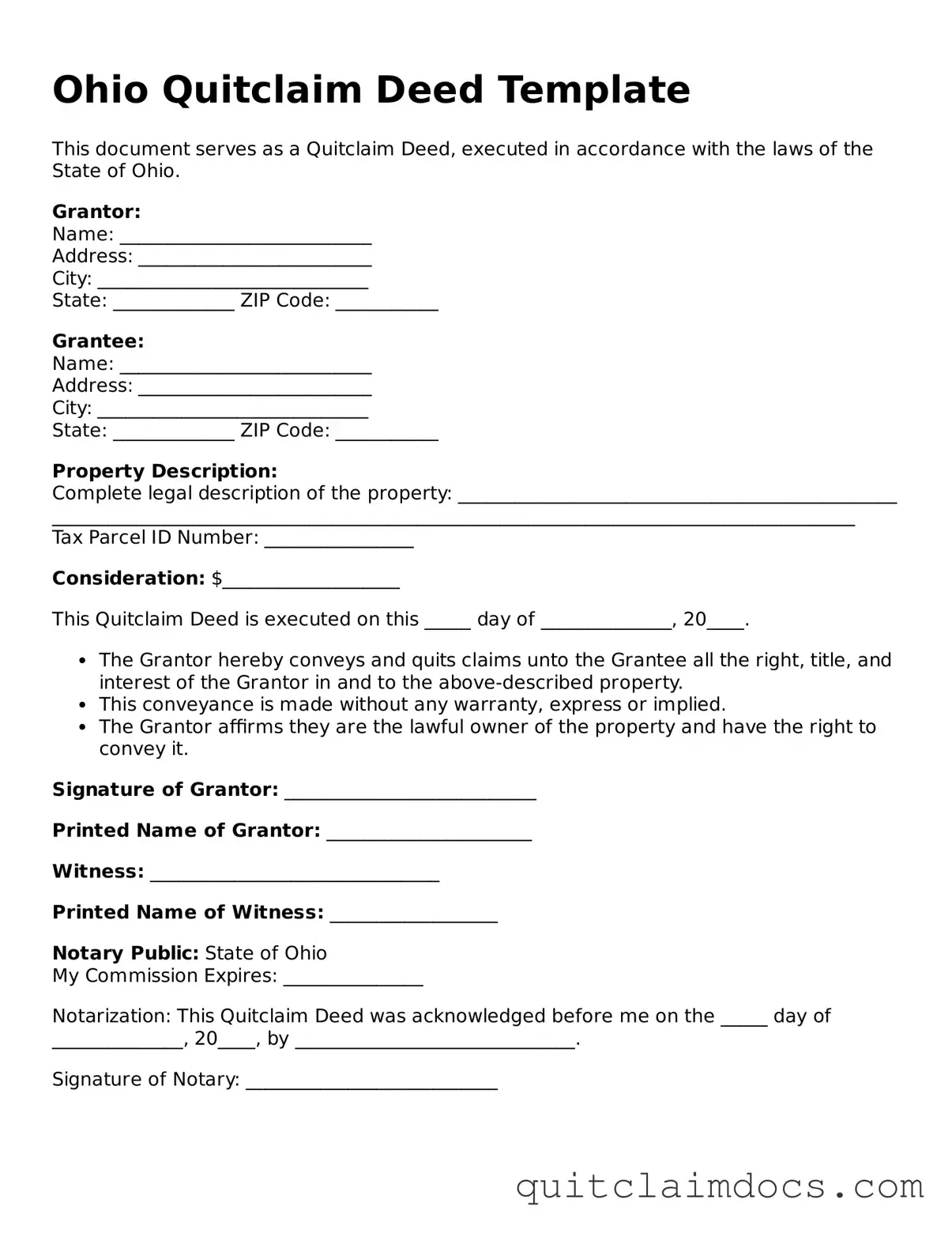Ohio Quitclaim Deed Template
This document serves as a Quitclaim Deed, executed in accordance with the laws of the State of Ohio.
Grantor:
Name: ___________________________
Address: _________________________
City: _____________________________
State: _____________ ZIP Code: ___________
Grantee:
Name: ___________________________
Address: _________________________
City: _____________________________
State: _____________ ZIP Code: ___________
Property Description:
Complete legal description of the property: _______________________________________________
______________________________________________________________________________________
Tax Parcel ID Number: ________________
Consideration: $___________________
This Quitclaim Deed is executed on this _____ day of ______________, 20____.
- The Grantor hereby conveys and quits claims unto the Grantee all the right, title, and interest of the Grantor in and to the above-described property.
- This conveyance is made without any warranty, express or implied.
- The Grantor affirms they are the lawful owner of the property and have the right to convey it.
Signature of Grantor: ___________________________
Printed Name of Grantor: ______________________
Witness: _______________________________
Printed Name of Witness: __________________
Notary Public: State of Ohio
My Commission Expires: _______________
Notarization: This Quitclaim Deed was acknowledged before me on the _____ day of ______________, 20____, by ______________________________.
Signature of Notary: ___________________________
